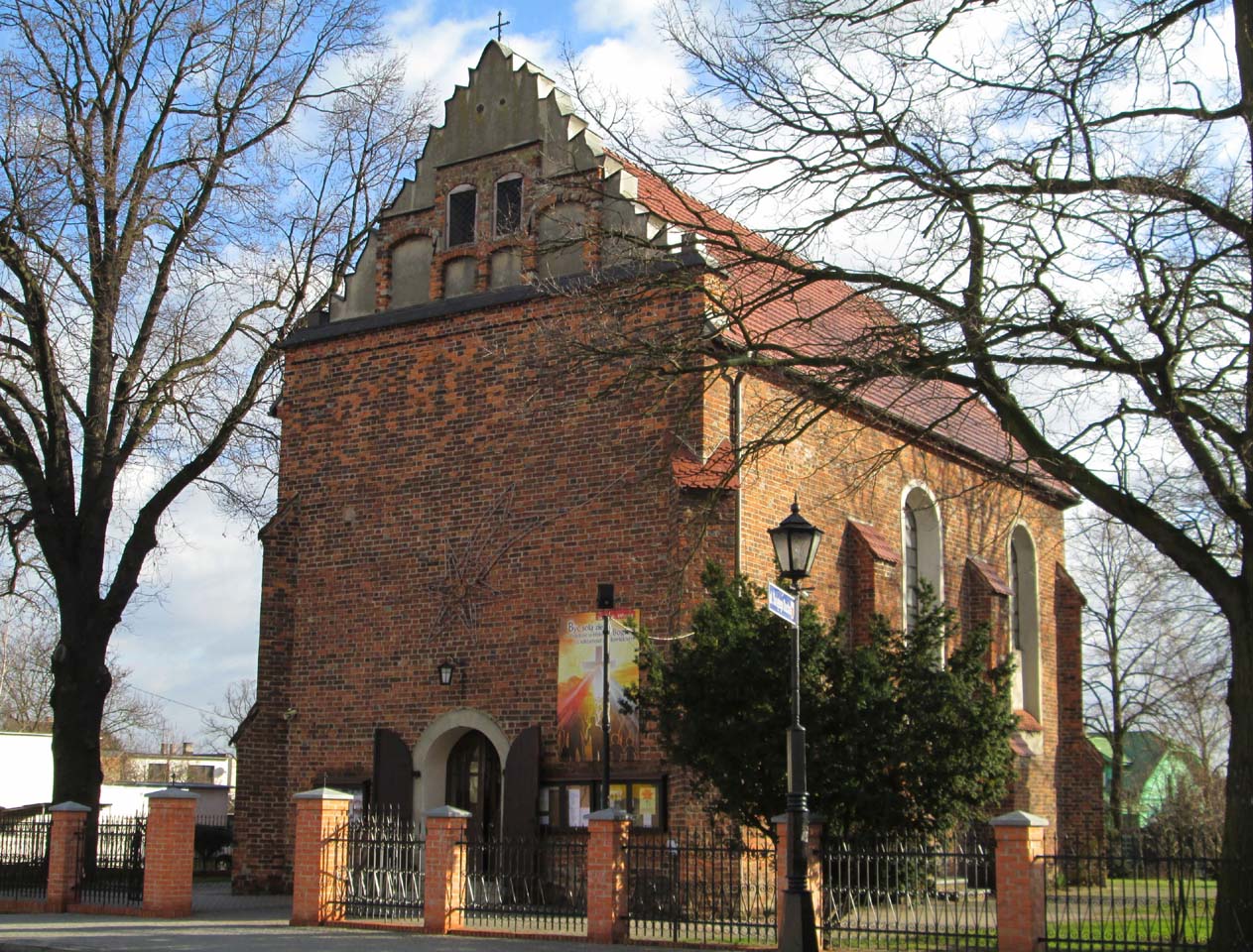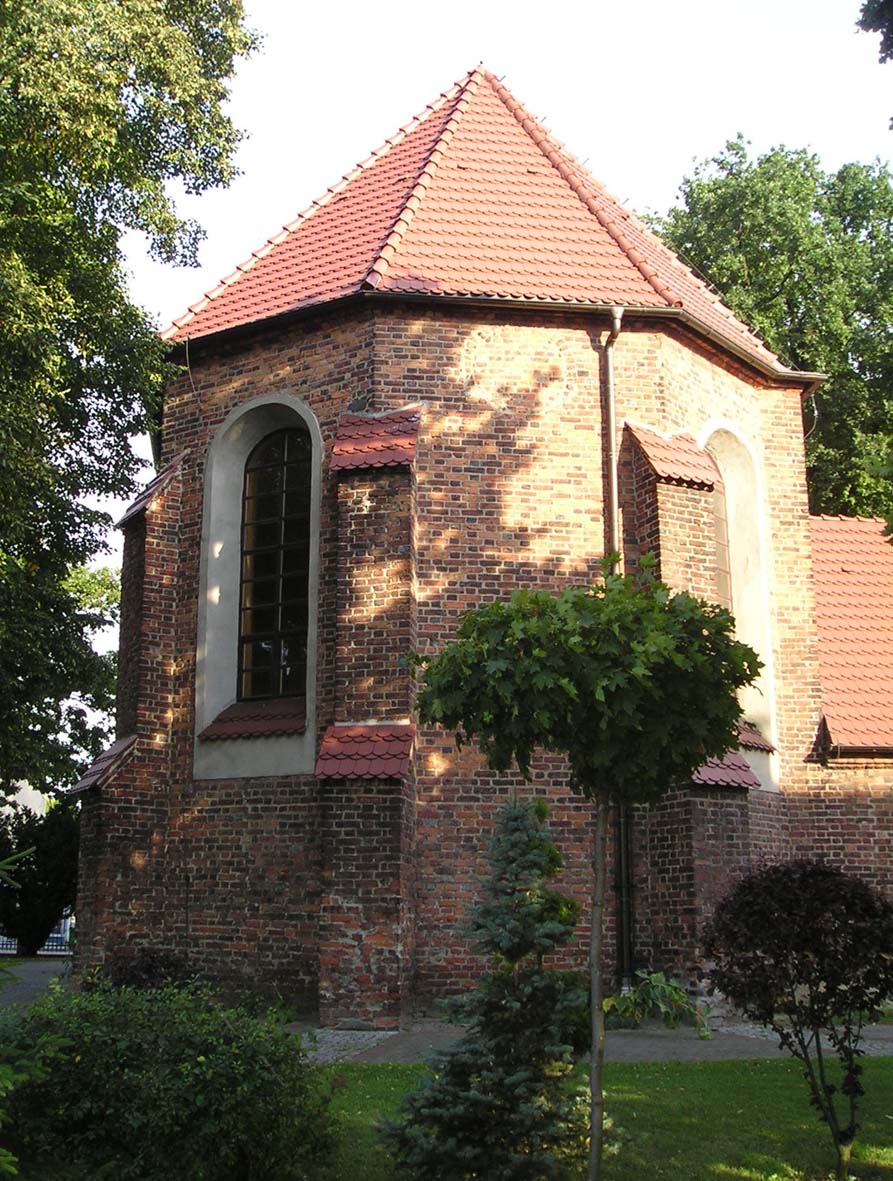History
The Gothic church of Holy Spirit was erected in the second half of the 15th century on the site of an older foundation from 1385. The town authorities were the founder and benefactor of the church and the almshouse built next to it. Around 1620, the church was rebuilt, then the western gable was transformed. In 1655, the church burnt down during the Swedish Deluge, but it was rebuilt only in 1698. During the German occupation, the temple was plundered and turned into a military warehouse. In 1944 it was reopened, but only for German soldiers. After the Second World War, the renovation of the historic building began.
Architecture
The church was situated outside the town’s defensive walls, in the former suburbs, on the route leading to Poznań. Since the second half of the fifteenth century, it was a brick structure, erected in the Flemish bond, aisleless, with dimensions of 8.7 x 20 meters, without the chancel separated from the outside, closed on three sides in the east. At the eastern part of the north wall, a four-sided sacristy was built. The walls from the outside were reinforced with buttresses, set perpendicular to the axis, except for the diagonally located corner buttresses. The west façade was originally decorated with a gable ornamented by blendes, below which the entrance portal was placed. The second entrance was located in the southern wall.
Current state
The church still has Gothic shape and the spatial layout of a small aisleless building with a rectangular sacristy on the north side. In the early modern period, the western gable and the form of all windows and portals were transformed. Most of the interior today has a Baroque decor.
bibliography:
Maluśkiewicz P., Gotyckie kościoły w Wielkopolsce, Poznań 2008.
Tomala J., Murowana architektura romańska i gotycka w Wielkopolsce, tom 1, architektura sakralna, Kalisz 2007.



